Wild Lettuce – Sleep Aid and Pain Reliever – Weekly Weeder #24
This post may contain affiliate links. Read my full disclosure here.
Wild lettuce has a long history of use as a sleep aid and pain reliever. We’ll cover how identify and use wild lettuce, potential side effects, and how to get rid of it if it’s taking over your yard and garden.
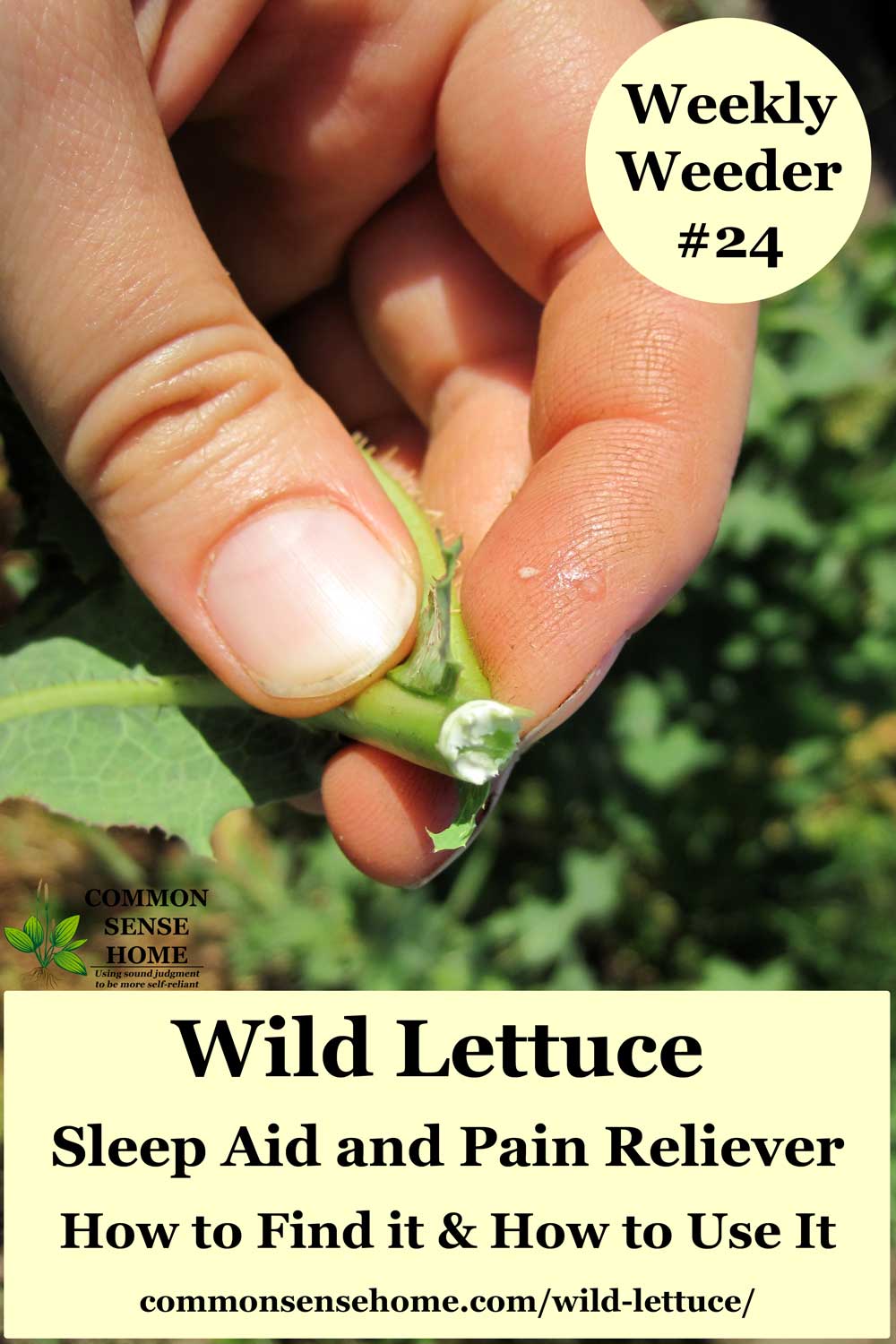
Today’s featured plant is Wild Lettuce, Lactuca virosa and Lactuca serriola.
Wild Lettuce is also known as opium lettuce, bitter lettuce, wild opium, horse thistle, China lettuce and prickly lettuce. Lactuca virosa (great or greater prickly lettuce) and Lactuca serriola (prickly lettuce) have similar medicinal properties.
Is prickly lettuce the same as wild lettuce?
In this case, yes. Lactuca virosa and Lactuca serriola are both types of prickly lettuce.
Canadian lettuce or Canada lettuce (Lactuca canadensis) is the most widespread wild lettuce in North America, and has similar medicinal properties.
Range
Wild lettuce is native to Eurasia, but has naturalized throughout most of North America, and also Hawaii. (See maps below from the USDA Natural Resources Conservation Service Plants Database.)
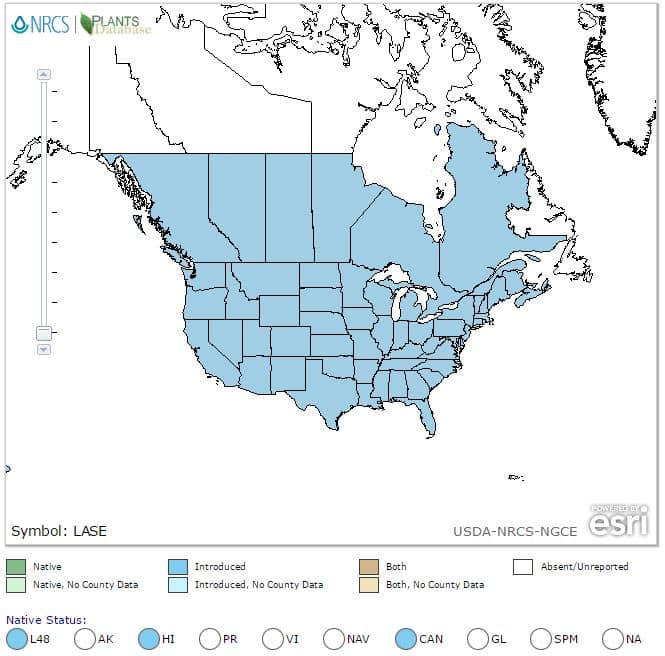
Greater prickly lettuce is less widespread.
Does wild lettuce grow in the UK?
Yes, it’s common along English roadsides and disturbed ground. The book, Backyard Medicine, highlights many plants common to England and the United States, including these.
You can find wild lettuce mostly in disturbed soils, such as vacant lots, along roadsides, in dumps and other waste areas. Lactuca serriola prefers full sun and tolerates dry soils.
Identification
L. serriola is an annual or biennial, growing 2-7′ tall. Leaves attach in an alternating pattern to a central stalk, and are up to 12 inches long and 4 inches across. The leaves are larger at the base of the plant and smaller as they move up the stalk.
Wild prickly lettuce has a distinctive line of spines or prickles on the underside of the leaves, running up the midvein. The leaves themselves are slightly prickly, mainly underneath. The prickles only poke a bit – gloves are optional. Once dried, they are more prickly.
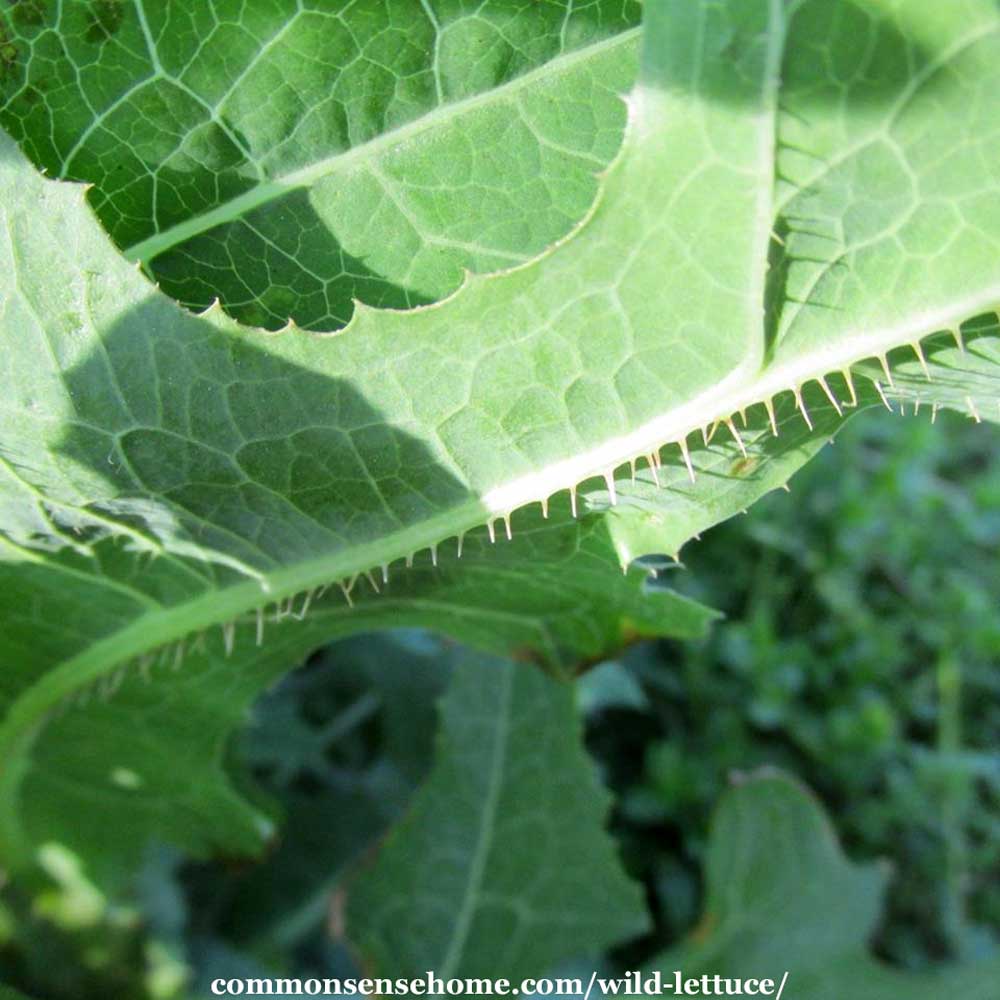
Wild lettuce blooms from mid-summer to fall. Flowers are small and yellow, about 1/3″ across and 1/2″ in length – somewhat like a skimpy dandelion flower.
Flowers have between 5 and 20 toothed petals. Multiple flowers are produced on each plant, and an individual plant can stay in bloom for about a month. The plants produce a white, milky sap.
Greater wild lettuce (L. Virosa) has a similar growth habit and appearance, but the leaves are more lance shaped with finely toothed edges. L. serriola has coarsely toothed leaves.
L. serriola is similar in appearance to perennial sowthistle. The primary differences are the line of midvein spines on the underside of the prickly lettuce leaf, and the flowers.
Sowthistle flowers are fuller and more like dandelion flowers in appearance. Prickly wild lettuce flowers are somewhat skimpy looking by comparison. Wild lettuce also has a taproot like a dandelion, whereas sowthistle has a system of runners – more like quackgrass.
Wildlife Habitat and Animal Fodder
Illinois Wildflowers states: “The nectar and pollen of the flowerheads attract various kinds of bees. The caterpillars of a few species of moths eat the foliage, including Cucullia intermedia (Intermediate Cucullia). The foliage is bitter-tasting and not a preferred food source for mammalian herbivores, although cattle and White-Tailed Deer occasionally eat it.”
Weeds – Control Without Poisons notes that chickens and pigs both relish wild lettuce as a green. The bitter flavor comes through in milk, so it’s best to eliminate it from dairy pasture if possible.

Is Prickly Wild Lettuce Edible?
These plants are the ancestors of garden lettuce, and the young leaves are bitter but edible. Eat leaves raw or cooked.
As the plants mature, the bitterness becomes more pronounced and they get downright unpleasant to eat. Dry conditions also make the leaves more bitter. (This is similar to dandelion leaves.) The texture of the leaves is similar to spinach or a hardy lettuce (with prickles), so excess cooking makes the leaves very mushy.
Would you like to save this?
Plants for a Future shares that the young stems can be cooked and used as an asparagus substitute, and the seeds can be refined to produce an edible oil. The oil is also used to make soap, paints, and varnishes.
Medicinal Use
The leaves and latex of the plant are gathered when the plant is in flower. Wild lettuce acts as a sedative and muscle relaxant. It also soothes the respiratory system and relieves muscle and joint pains.
Here’s the kicker – the plants vary in the amount of active compounds. Some people see benefits, some don’t. If you’ve seen claims on the internet about harvesting and using opium lettuce for natural pain relief to replace narcotics, please be aware that results may vary.
Always check with your doctor before using any herbal preparation, especially if you have a known medical condition and/or are on any prescription medication. The sedative effects of wild lettuce may interact with prescription sedatives.
Do not use if you are nursing or pregnant. This website is for general information only. Exercise caution when using any wild plants and make sure you have positively identified the plant.
Wild Lettuce Tea

The Holistic Herbal suggests wild lettuce tea for pain relief. Pour one cup of boiling water over 1-2 teaspoons of dried wild lettuce leaves, and allow them to infuse for 10-15 minutes. Strain and drink. Consume up to three times daily.
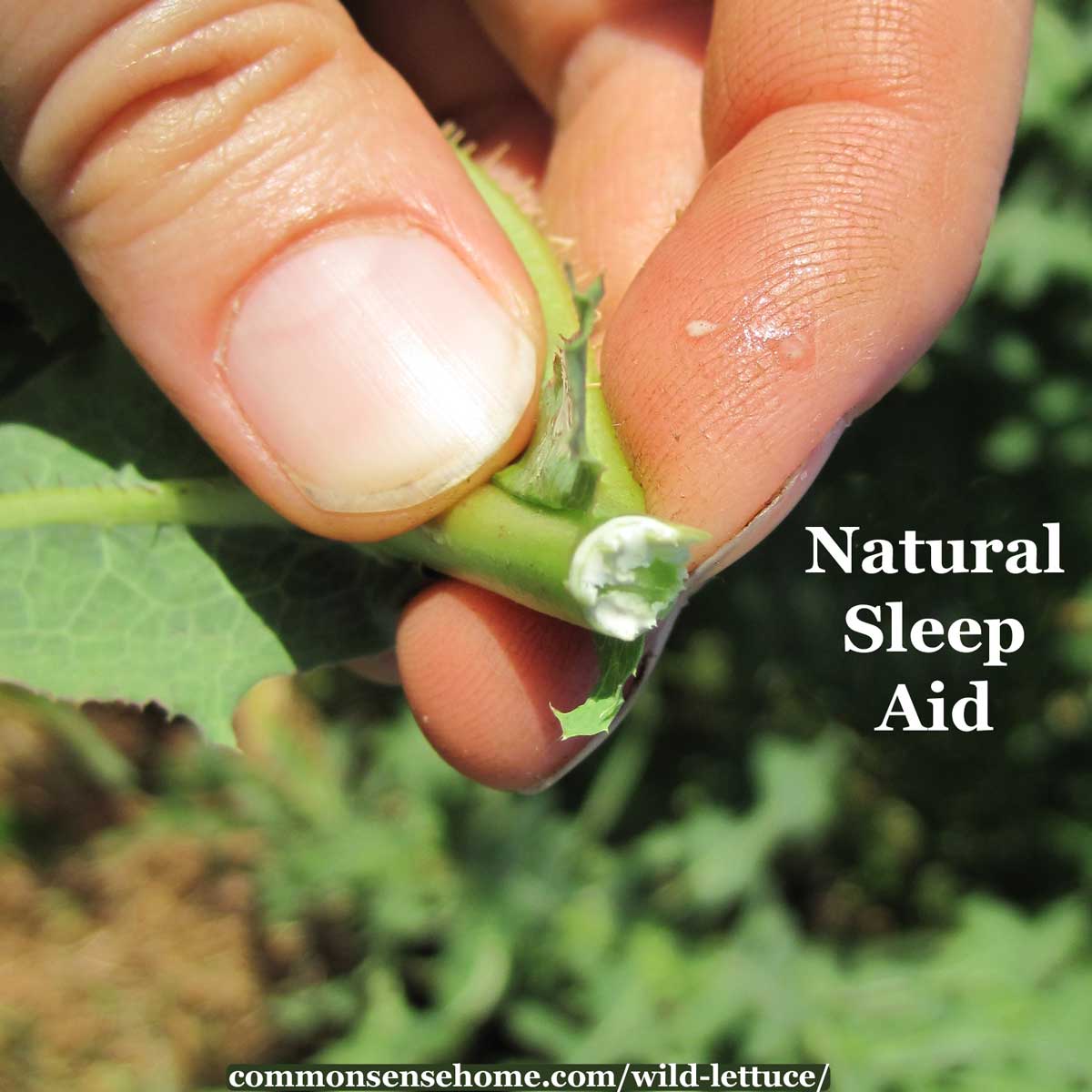
Wild Lettuce Extract
To make wild lettuce extract, harvest above ground parts of plants when in flower. Chop plant material finely and place in a glass jar. Fill with enough vodka to cover the plant material, pushing plants below the liquid level.
Store in a cool, dark location for 2 weeks. Strain and bottle.
Use half a teaspoon of wild lettuce extract 3 times per day for a calming effect, or 1 teaspoon at bedtime to help you sleep.
Wild Lettuce High
Wild lettuce may cause hallucinations when consumed in quantity, along with its sedative and relaxation effects.
HOWEVER – I don’t recommend screwing with this stuff, because documented cases where people had hallucinations came with a wide array of side effects, including:
- Dizziness
- Nausea and vomiting
- Anxiety
- Headache
- Blurred vision
To consume enough to get a buzz, you may also be puking your guts out.
I dry wild lettuce overnight in the dehydrator at low temp (95°F) until crisp, and then store it in a tightly sealed canning jar for later use.
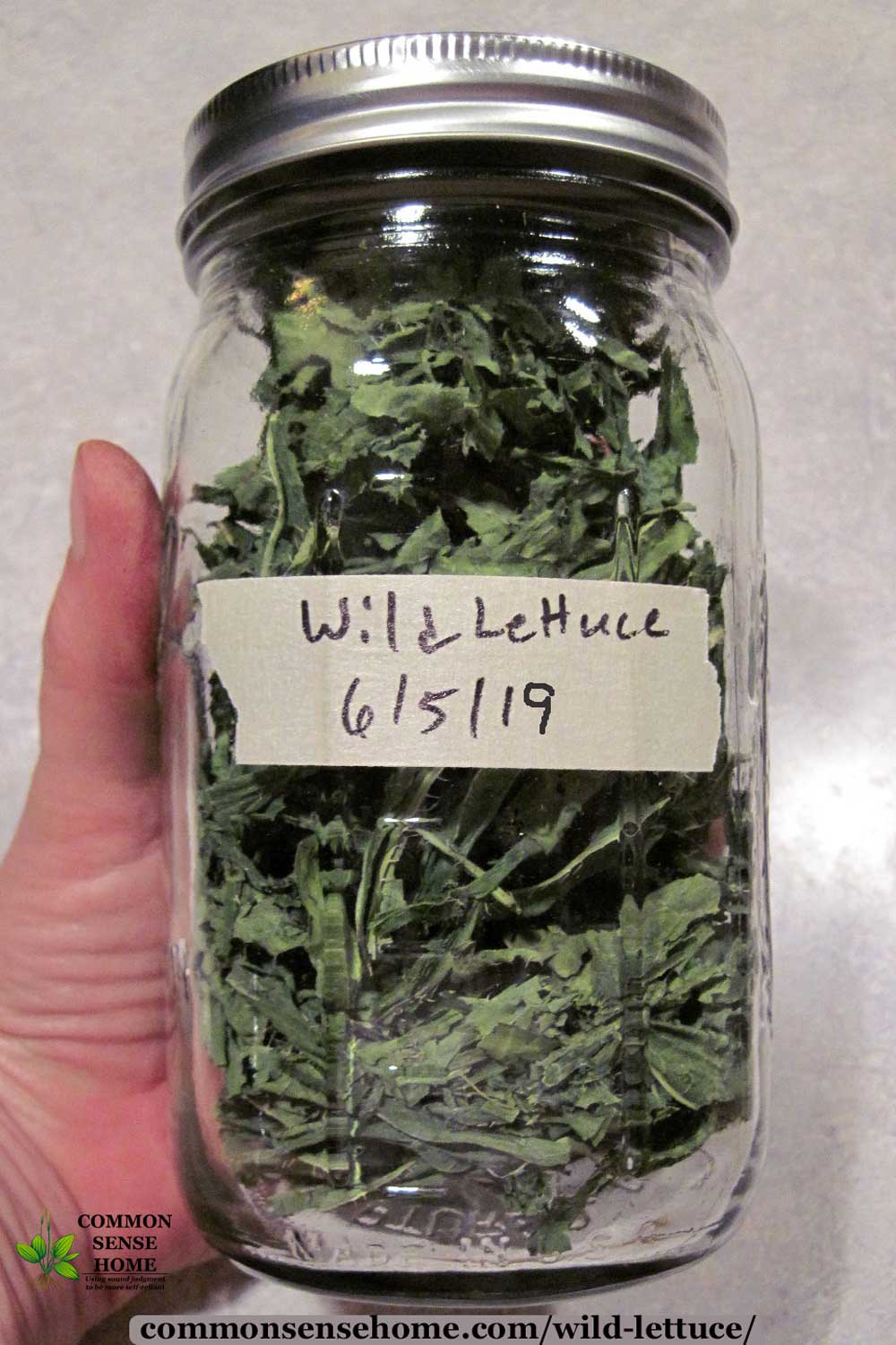
Getting Rid of Wild Lettuce in the Garden, Landscape or Field
In The Gardener’s Weed Book, Barbara Pleasant notes that the best control methods are those that catch wild prickly lettuce when it’s young.
Like dandelions, it spreads many seeds, so catch it before it flowers out. It has a taproot, again, like a dandelion, so cut young plants just below the surface with a scuffle hoe. Older plants, like dandelions, will resprout from root stumps. Heavy mulch smothers the plants.
Weeds – Control Without Poisons states:
(Wild prickly lettuce will be found where there are) low aerobic activity, hardpans, crusted soil, low pH, etc. Calcium is always too low when prickly lettuce arrives. Magnesium is high, as is potassium. High manganese and iron releases also figure.
So – work to aerate your soil and improve the amount of organic matter, and considering liming the soil to improve calcium levels.
Please Like, Pin or otherwise share this post if you would like the Weekly Weeder series to continue.
You may also find useful:
- Grandma Called it Medicine Leaf
- Harvesting and Using Dandelion Roots
- Catnip – Uses for People and Cats – Weekly Weeder #19
The Herbal Academy offers many excellent courses and resources for those who would like more detailed plant use information, including their herbal fermentation course linked below.
Originally published in 2012, last updated in 2019.

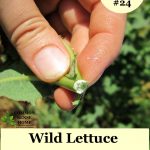
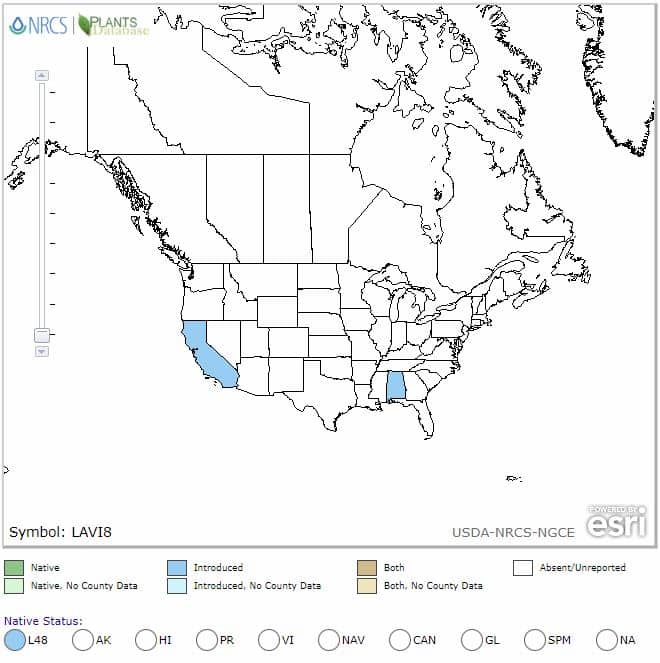
My cousin gave me this in dried form recently in Slovenia and it has helped me get off of sleeping pills. She is sending me some seeds but until they are ready to harvest I will have to buy more. Is there a reputable producer that I can buy the dried leaves from in Canada or US that you are aware of? I have been searching for hours but concerned about the source . Any chance you can help with a source?
Mountain Rose Herbs stocks an extract and dried leaves, and they do ship to Canada. I’ve always been happy with the quality of products I’ve ordered from them.
I hope that someone out there in “the wild” can advise me re: plant identification.
When reading this article, it seems like the author is describing a plant that I’ve known all my life as “milk weed.” Same purple stems, same milky latex, not sure about the blooms though…
Can anybody help me distinguish between Prickly Lettuce & Milk Weed, or are they just the same thing & I’m simply clueless?
TIA
Typically “milkweed” refers to plants in the Asclepias genus, such as common milkweed (Asclepias syriaca), swamp milkweed (Asclepias incarnata), or butterfly milkweed (Asclepias tuberosa).
You can read more about milkweed here – https://commonsensehome.com/milkweed/
That said, sometime plants pick up local use names – such as you calling the plant in this post “milkweed” – probably due to the milky sap. That’s why I always include scientific names. The world is a big place, and sometimes a use name in one location doesn’t match the use name in another location.
How do u dry the leaves..naturally in sun..ober dehydrator. Does the wild lettus pills 500mg work well?
I use my dehydrator to dry them. I explain different ways to dehydrate food in the article “Home Food Drying“.
Each brand of pills will be different. All you can do is try them out and see if they help.
Need to know more about medicinal herbs
In Italy we eat what is called Crespina, and it looks like Latuca Virosa. It is picked when the plant is young (because it is very bitter) and boiled and then sauteed in olive oil, garlic and red pepper. It is delicious! It’s actually a common food that is supposedly very high in iron, but nobody in Italy has ever mentioned the opiate effects. Maybe this is another reason Italians are always happy?
How interesting! Thank you for sharing. Who knows?
The “Evolution” that some smoke shops sell dried Lactuca Virosa, might be helpful. Though in my opinion, kratom, is a more effective herbal opioid pain reliever; and more reddily available for sale at local distributors.
Can I purchase the lettuce anywhere? Please advise. Thanks
I have not seen it listed for sale.
Hi! Thank you so much for writing this very informative article. I was wondering what you would consider a small dose of the sap? Thank you!
“Small” is a relative term, based on the individual. People are larger or smaller in size, and may have difference levels of tolerance to the active compounds. If someone were to attempt to take the sap internally, I’d start with a very small amount and increase slowly as needed, watching for any signs of problems. Always make sure to check with a trained healthcare provider if you are on any medications, and don’t experiment at all if nursing or pregnant.
How can I tell the difference between wild lettuce and sow thistle? Do they both have the same properties?
The most obvious difference in appearance is the root system. As noted in the post: “Wild lettuce also has a taproot like a dandelion, whereas sowthistle has a system of runners – more like quackgrass.”
Sow thistle roots are long runners, but very brittle. They like to break into pieces as you pull them up, and each piece grows into a new plant.
http://natureconservation.in/medicinal-uses-of-common-sowthistle-sonchus-oleraceus/ notes:
I’m desperately seeking advice on whetherornoti have wild lettuce. it followsall descriptionexceptthe leaves are roundedmore oval and long. i will try to include pictures. ty
The safest way to get a plant identified is to have someone knowledgeable look at the plant or plant samples. If you live in the United States, your local cooperative extension office should have staff that can help you. To find the cooperative extension office near you, start at https://www.extension.org/
When you say wild lettuce or opium lettuce you mean Lactuca virosa right ??? serriola is milkthistle
No, this post is about Lactuca serriola, but they both are sometimes known as opium lettuce, and have similar medicinal properties. Here’s an example from The Poison Garden in the UK “Lactuca serriola, prickly lettuce, is a close relative of the domestic lettuce that has been used as an alternative to opium.”
I have an app that. That identifies plants. It’s called picture this. I downloaded it on my phone. You can use it without paying for the subscription.
I’m a new student(self-teaching) to the use of natural medicines and food sources. I would like to thank you for this information but I would like to ask a question. Will this work in tincture form? With brandy? It would seem easier for me to control the dosage if this is possible. Would there be a standard to go by concerning dosage amounts. If not I would likely start with two drops in a glass of water and increase carefully until I felt the effects that I would be needing. I have RA and I wake sometimes in the night with restless legs and anxiety with some occasional neck and jaw pain. I refuse to take prescription drugs due to the side affects and costs.
Yes, the plant can be tinctured. Dosage will vary depending on the strength of the tincture, and there’s no easy way to home test potency, so there would be no easy way to set standards. Also, each individual is different.
Do you use magnesium supplementation? Several of the symptoms you mention are commonly helped by magnesium, orally and topically. The Magnesium Miracle is an excellent read on the topic.
I was wondering how do I make a tea? Do I dry out the who plant then boil it? How many plants do I boil? I have about 3 pkants that I up rooted and now an drying them out. Also how can I plant these to grow more?
Pour a cup of boiling water on to 1-2 teaspoons of the dried leaves and let infuse (covered) for 10-15 minutes. Strain out leaves. Drink 3 times per day.
If you pulled the plants up, they are dead, and cannot be used to grow more. In the future, if you would like to grow additional plants, allow them to flower and set seed. Harvest the dried seed heads and plant the seeds.
I was wanting to know the best way to handle picking and using Prickly Wild Lettuce. I see they have stickers on the tips of each leaf. The spines top and bottom are full of them. The roots looks like it has hundreds of stickers! I definitely plan to wear gloves to pick them. I pick up lots of wild lettuce when I go horseback riding. So easy to see at that level. I got to looking at my own property and it is loaded with the Prickly Lettuce. I noticed some starting to seed and I would love to grow all of the different species of it that I have been finding. It’s been a life saver for me when it comes to pain all over. Thank you Lord for this wonderful weed!
I look forward to trying this common garden spot weed for pains that in the past I had been receiving strong opiates for pain control. Hey if helps with my chronic pain with mild side effects that would be great ! Since I no longer take opiates chronic pain can very much dictate your daily activities any natural medicinal plant is appealing.
Sincerely ; Steve M 6/12/2017
I find this veey interesting and like one viewer am finding more and more about weeds or herbs in yard or garden ! I have a tall wild lettuce or prickly lettuce growing in a spot and I am getting confusing advice on using !should I lap the milk up or boils leaves or dry leaves and make tea what is best for very bad arthritis pain doctor refuses to give me something for pain and to help me sleep medicine she gives us useless
I cannot legally or safely provide usage instructions for specific individuals or conditions. You may find the post on arthritis remedies helpful – https://commonsensehome.com/home-remedies-arthritis/
Excellent article! I was not aware that this common “garden menace” had such significant medicinal properties! I was skeptical at first, but tried a crude experiment last weekend to see if the claims had any truth to them.
It is currently late March, so the rosettes are just starting. There were several slightly more mature plants growing near my house foundation. These were maybe 12 to 16 inches tall, and the stalks were purple. (This happens once a main stalk is formed)
My experiment consisted of pulling a plant, breaking the stalk to let the latex bleed out, and repeating this 3 to 4 times per plant. The first time, I tried a single plant and after about 20 minutes, felt a very slight effect. I waited a few hours for it to wear off, and then tried the same thing with 2 plants. This time, I got a more pronounced opiate effect. I then waited a few more hours for it to wear off, and tried the same thing with 3 plants. I would say this time the effect was perhaps equal to a 7.5mg lortab – but it was also slightly sedating too, so maybe a combo of a lortab and shot of whisky. Be warned though, that latex tastes horrible! Possibly the most bitter thing I have ever tasted. Have a sweet drink with you, and be careful on dosing. Just like an opiate, overdosing on this can kill you.
I forgot to include that after breaking the stalk, I licked the latex directly off the stem of the plant. Then repeat that 3 or 4 times per plant. And have a drink handy, preferably something sweet!
i cut the stem and no sap flowed it tasted like celery
Same here don’t know if it’s too young or what it has buds on it but it differently tastes sweet and tasty actually
It may not be the same plant, as there are a number of plants with similar foliage. Sample with care.
The “medicinal” properties of this plant can be equally potent to that of the poppy. It must be used correctly however..
Take 1-4 leaves (2 is pretty strong for me) from the upper part of a mature plant, right before flower if possible, and also even better during a drought. Chew up a leaf slightly then place under the tongue, let it sit while occasionally spitting out the juices. (Swallowing juices too much can lead to purgative effects.). Continue slight chewing here n there to release the milky sap then repeat with another leaf or two.
Be careful as it can be a potent substance with sedation so strong and long lasting it can cause vertigo and nausea. (Talking from experience here.) Start low but a very useful alternative to expensive pharmaceuticals or over the counter sleep aids considering it grows everywhere.
Thanks for sharing your experience. Note to anyone who may try this, those leaves will be *very* bitter.
Would you use for back pain. My son has sciatic nerve pain that can put him down for weeks if he lifts anything the wrong way or even at times turn too fast. He is against modern medicine all together due to the addiction properties associated with them.
I have a disc disease that I struggle with.
I’m working on making our meds from what our Holy Father gave us to use for our bodies.
Not to mention making sure I can help others in the event of things going bad as could be any day.
Please respond. You can pm me too.
It’s not safe or legal for me to diagnose or treat a specific illness over the internet. The herb has historically been used for pain relief.
I’ve read that the seeds can be ‘processed’ to make an oil for pain. But how is not mentioned. I need more information.
Seed oils are typically made with a seed oil press, but I don’t know if they would work with seeds this tiny. This is an example an oil press on amazon – Piteba Nut and Seed Oil Expeller Oil press.
Some medicinal oils are also made by soaking plant material in olive oil or other edible oils. There’s an example of how I do this with plantain leaves here – https://commonsensehome.com/grandma-called-it-medicine-leaf/
Please understand that since the plant is a mild opiate, I can’t give specific directions for anything that might be used inappropriately.
I have been drying and eating two leaves at a time for chronic migraines and sometimes it works. Eating them dried escapes the bitterness.
I have the exact same problem as your son and I have had very good results from wild lettuce tincture and almost zero results from CBD oil. The CBD oil makes me sleepy which is great if it’s bedtime but it doesn’t seem to do anything for the pain. But wild lettuce tincture works almost instantly within 5 minutes of taking it and so I even ordered some wild lettuce seeds and I intended to grow my own.
May I ask where you ordered seeds and what did you order? I am too nervous to just go pulling up random weeds.
Thank you!
Strictly Medicinal sells herb seeds, including wild lettuce seeds. I’ve ordered medicinal herb seeds from them in the past.
Pain killer and lifting labor are a bad combination. If pain prevents you from lifting, then you should not be lifting. In such situations. Pain is your friend when it tells you not to further the injury If you do have to take pain killers, use them for resting… not lifting.
You have published good information
Is this plant similar to opium?
Or does it have similar effects to opium?
this post is good. We should stop using non selective herbicides so as to save some of these important plants.
YES! We need to limit herbicides period! They are causing cancers, epilepsy, birth defects, autism in children and all kinds of health problems. They are deadly. The only kind of “weed control” should be something organic. NOT chemical. BAN Monsanto!!!
Tone was a little too, um, aggressive for my tastes…
But you’ve got to admit, it’s kind of insane that anyone ever had the thought “let’s pump a huge amount of poisons in the same place we live in, that’ll work out just fine. Yeah…”
Prickly Lettuce, prior to flowering, is browsed by Mule Deer here in the Southern Black Hills, Hot Springs, South Dakota.
Heyy. Just out of curiosity. Why don’t they eat after flowering ?
I suspect that this may be explained by the Crocodile Dundee clip below:
Once the plant flowers, the leaves become extremely bitter. The plant does this as a survival mechanism, to protect the seeds from browsers, like the deer.
One by one I have been learning about all the weeds in my yard, and one by one i’m finding that almost all are fascinating plants in their own right whether by their culinary, medicinal, or dyeing usefulness. Thanks for this great post! You’ve just helped me identify another abundant “weed” that i don’t have to pull anymore. 😀
Hi! Thanks so much for featuring my post on 100 things you can compost! This week I posted on saving tons of money on electricity over time, and my recipe for coconut water kefir–a healthy alternative to soda.
Have a great week!
Dawn – I enjoyed your post, and will also be sharing it on the Common Sense Homesteading facebook page.
What about all the spiney parts? It looks like Urtica dioca… have you ever eaten it raw before? I know with nettles the stingers go away with light cooking, but what about this guy?
Thanks!
🙂
Savannah – the spines aren’t nearly as pokey as nettle, and they’re mainly concentrated along the center rib, which can be easily removed if needed. I have eaten some young leaves raw, and it doesn’t irritate the mouth like nettle – it’s just bitter, like a strongly flavored garden lettuce.
Are the flowers ever purple in color?
Not that I am aware. That’s more likely to be chicory.
there is a thing called blue lettuce that sounds and looks similar other than the color of the flower!
Are you thinking of chicory?